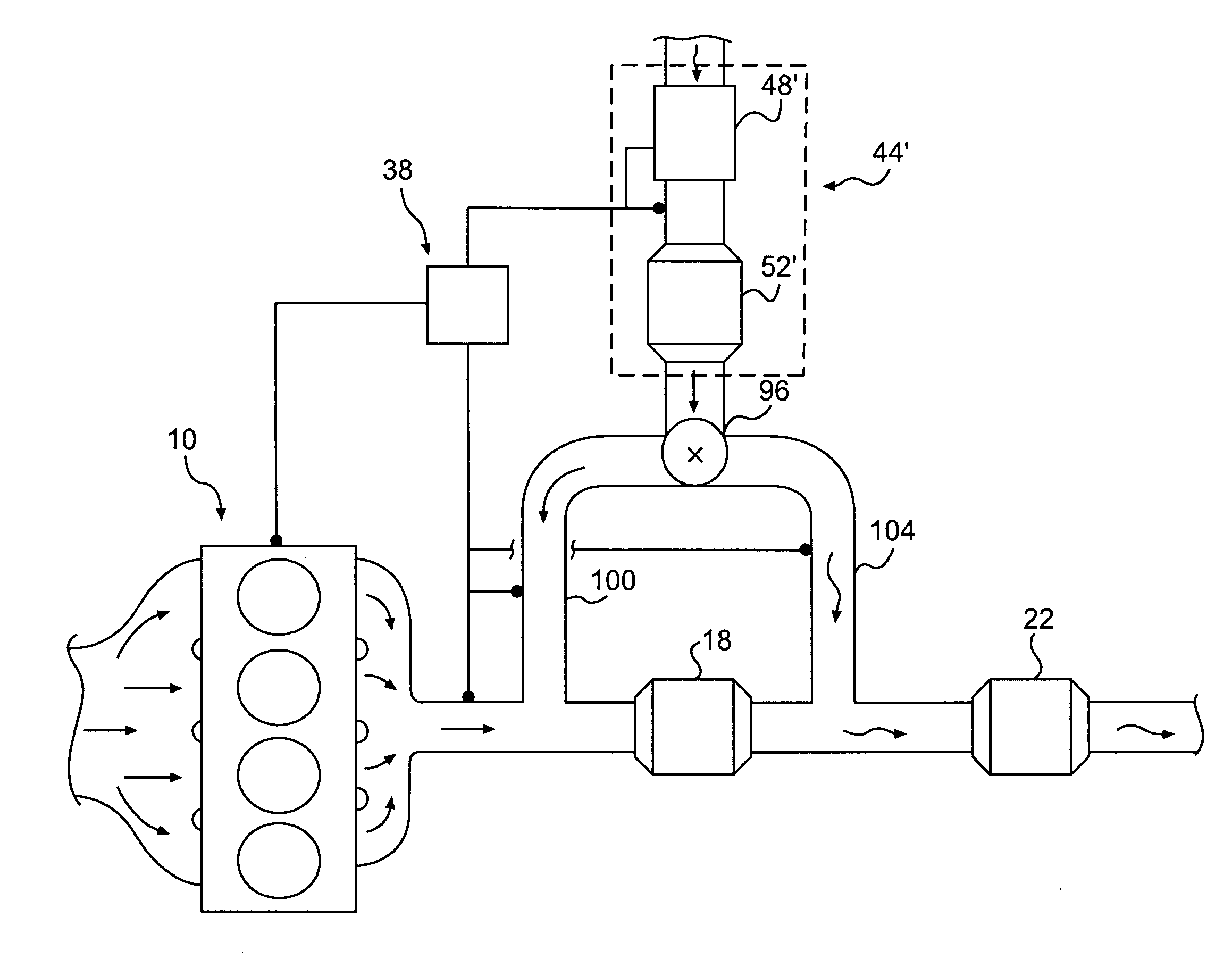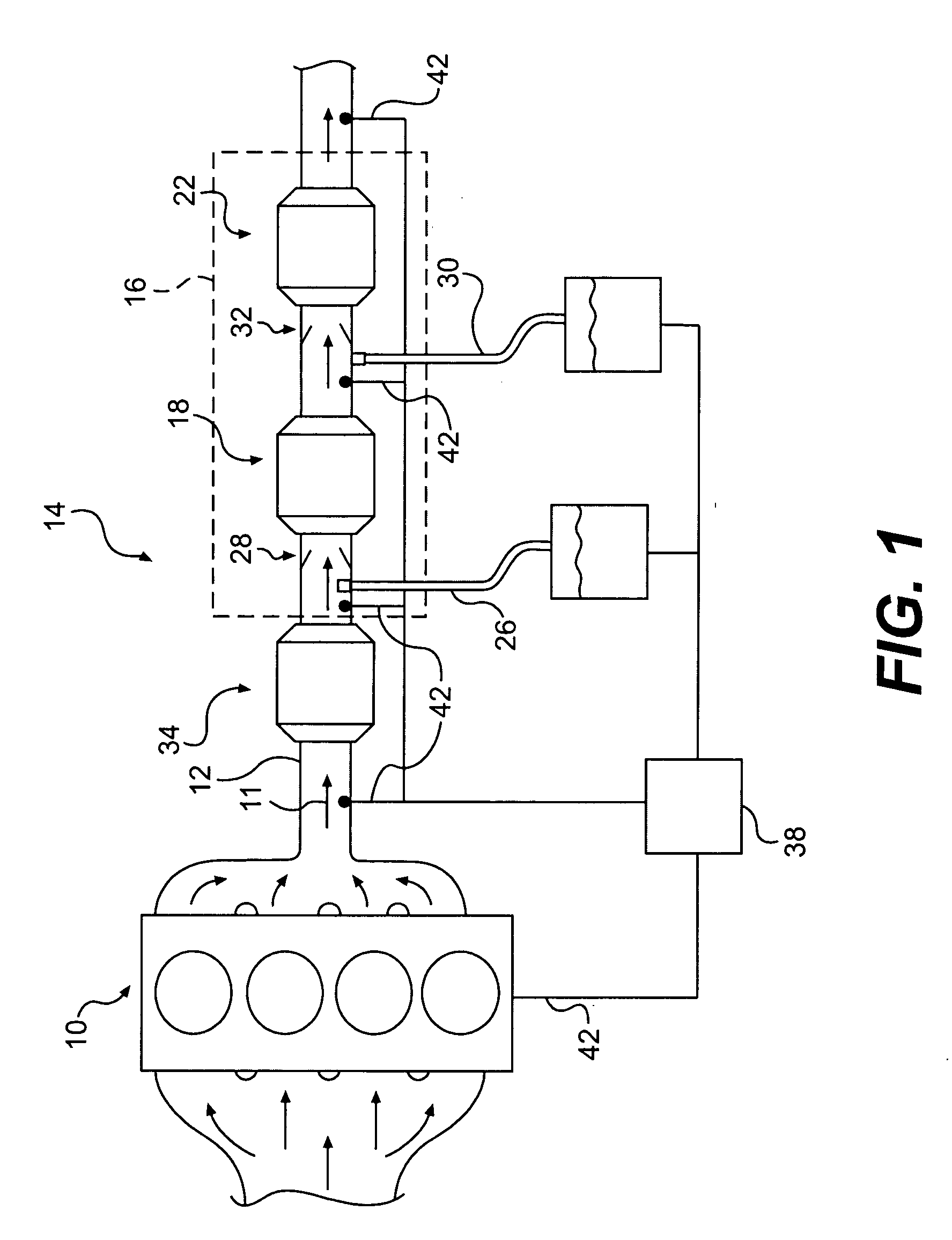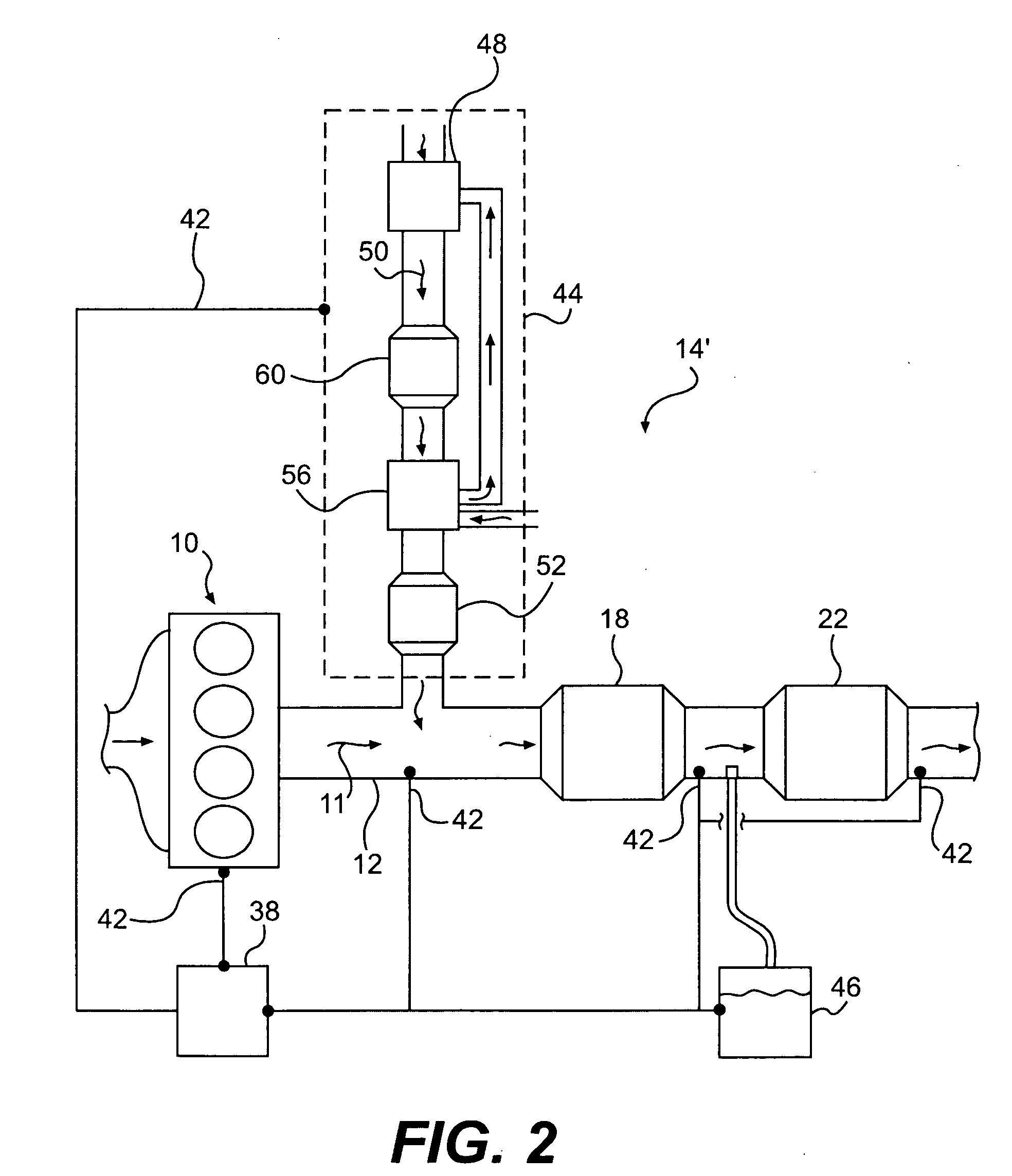Multi-stage system for selective catalytic reduction
a catalytic reduction and multi-stage technology, applied in the direction of machines/engines, process and machine control, arsenic compounds, etc., can solve the problems of nox not being reduced, requiring significant space, and difficulty in matching the quantity of ammonia and nox flowing into the scr system
- Summary
- Abstract
- Description
- Claims
- Application Information
AI Technical Summary
Benefits of technology
Problems solved by technology
Method used
Image
Examples
Embodiment Construction
[0015]FIG. 1 illustrates an engine 10 and exhaust system 14 including a selective catalytic reduction (SCR) system 16, according to an exemplary disclosed embodiment. Combustion within engine 10 may produce a NOx-containing exhaust gas stream 11, which may flow into an exhaust passage 12 of exhaust system 14. Exhaust stream 11 may flow downstream toward catalysts 18, 22 of SCR system 16.
[0016] SCR system 16 may include multiple SCR catalysts 18, 22 and multiple ammonia supply systems 26, 30. As shown, first SCR catalyst 18 and second SCR catalyst 22 may be in fluid communication with exhaust passage 12, and second SCR catalyst 22 may be disposed downstream of first SCR catalyst 18. Further, first ammonia supply system 26 may be configured to supply ammonia to exhaust passage 12 upstream of first SCR catalyst 18, and second ammonia supply system 30 may be configured to supply ammonia to exhaust passage 12 downstream of first SCR catalyst 18 and upstream of second SCR catalyst 22.
[0...
PUM
| Property | Measurement | Unit |
|---|---|---|
| temperatures | aaaaa | aaaaa |
| temperature | aaaaa | aaaaa |
| operating temperature | aaaaa | aaaaa |
Abstract
Description
Claims
Application Information
 Login to View More
Login to View More - R&D
- Intellectual Property
- Life Sciences
- Materials
- Tech Scout
- Unparalleled Data Quality
- Higher Quality Content
- 60% Fewer Hallucinations
Browse by: Latest US Patents, China's latest patents, Technical Efficacy Thesaurus, Application Domain, Technology Topic, Popular Technical Reports.
© 2025 PatSnap. All rights reserved.Legal|Privacy policy|Modern Slavery Act Transparency Statement|Sitemap|About US| Contact US: help@patsnap.com



